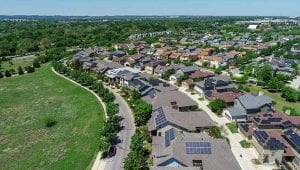The fundamentals of the Australian electricity market has been turned on its head: Not by climate targets, or the increase in large scale wind and solar, but by the huge amounts of rooftop solar PV put on the roofs of homes and businesses across the country.
The uptake of rooftop solar means that peak demand is not the only issue confronting the Australian Energy Market Operator and regulators, it is the growing impact of minimum demand – when rooftop solar soaks up an increasing amount of the market once reserved for coal and gas generators.
On Monday, we noted that rooftop solar had taken a bigger bite out of the Christmas lunch of Victoria’s brown coal generators, sending that state to a new minimum demand level – less than half the capacity of the remaining coal plants.

AEMO has followed that notification with a graph highlighting how minimum demand levels have been set in all mainland states this spring and early summer, eating into what was once the profit centres of the fossil fuel industry.
This is a good thing, although it does present challenges for the market operator, which has to ensure there are enough “dispatchable” generators and loads to help it manage the grid if a major contingency emerged, such as a storm or power plant or factory failure.
In South Australia, for instance, rooftop solar has provided up to 92 per cent of local demand when the record low of 100MW of “minimum demand” was set in October this year.
That’s one of the key reasons AEMO is looking to upgrade inverter ratings in all states, giving it the power to manage and “orchestrate” distributed energy resources, which also include household batteries and electric vehicles.
However, there are concerns about how some of these plans are being implemented in some states, particularly Queensland where solar and battery giants have complained loudly about the “brutal” measures proposed to manage rooftop pv in that state.
The only state not to set a new minimum demand record in recent times is Tasmania, which hasn’t budged the dial since 2013, largely because little rooftop solar has been built in that state.
AEMO notes that maximum demand records “have not been broken for years.”










